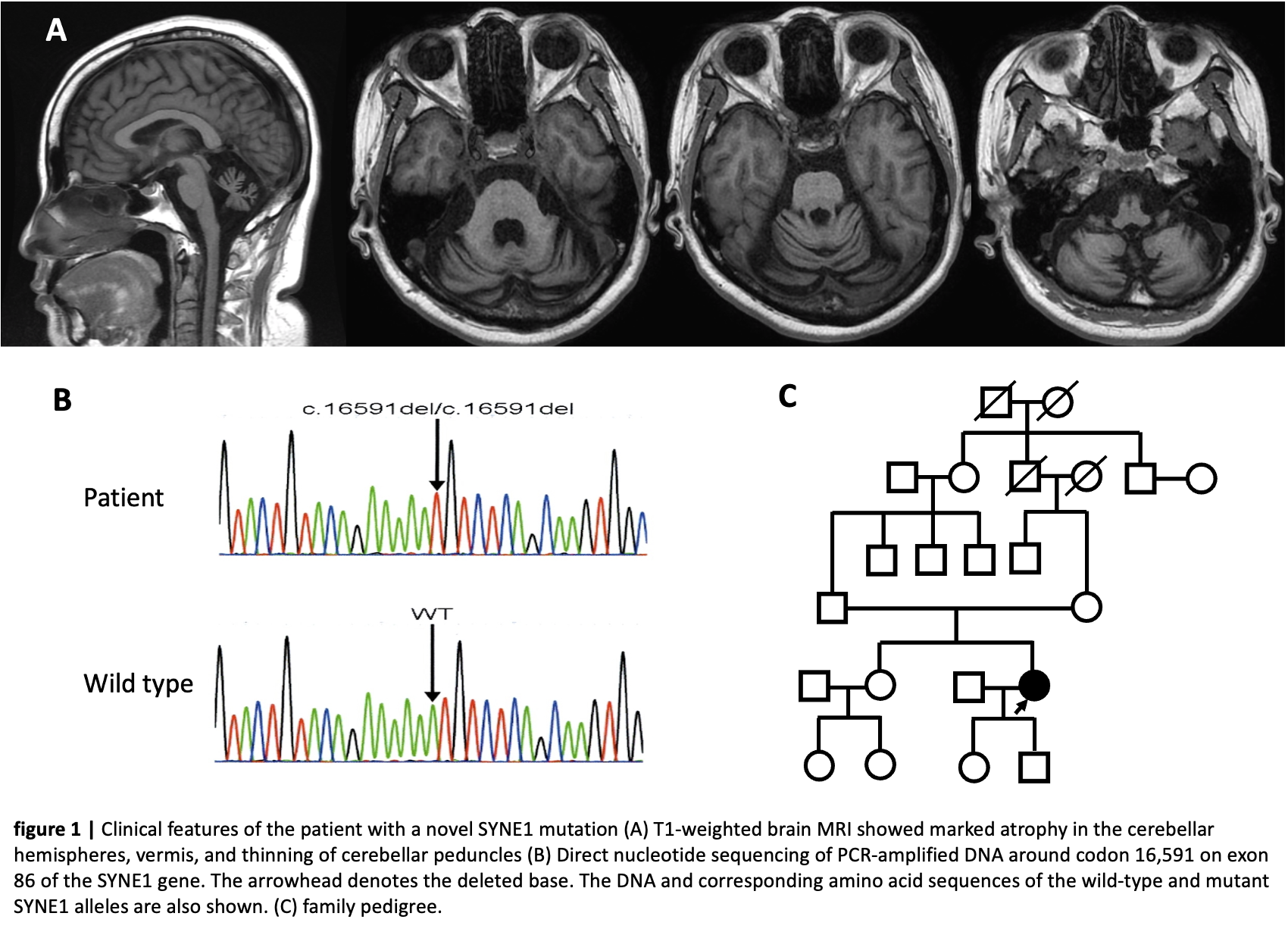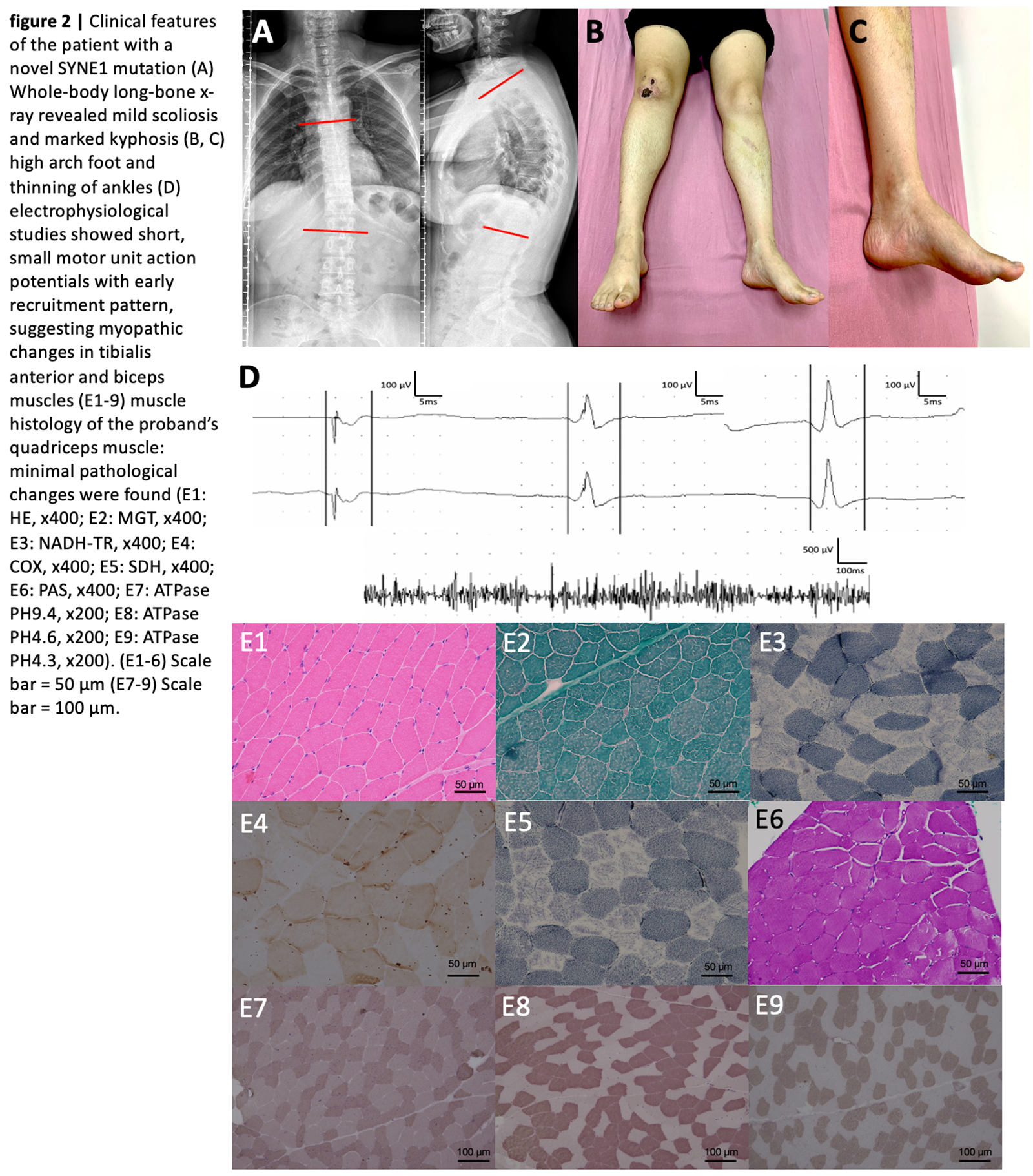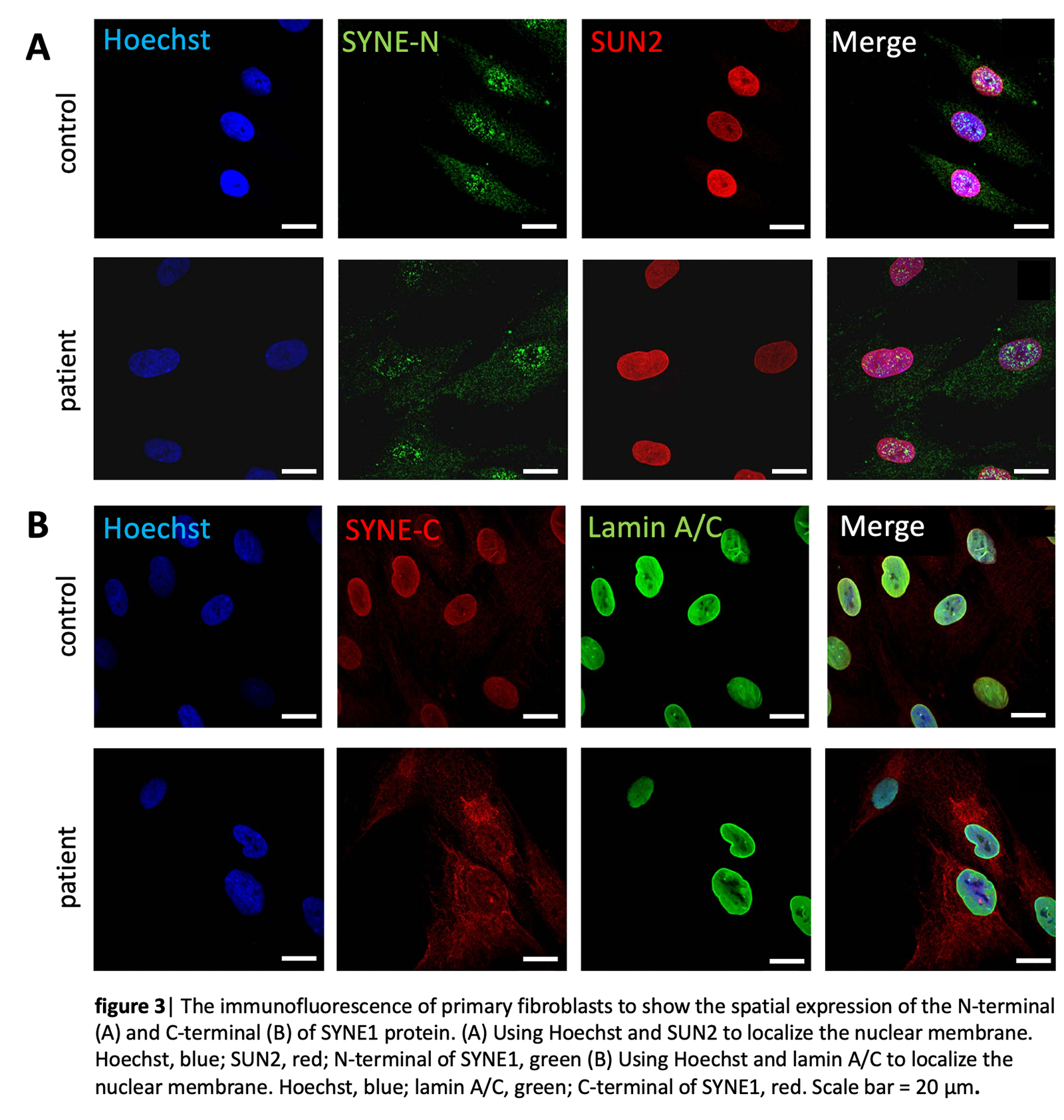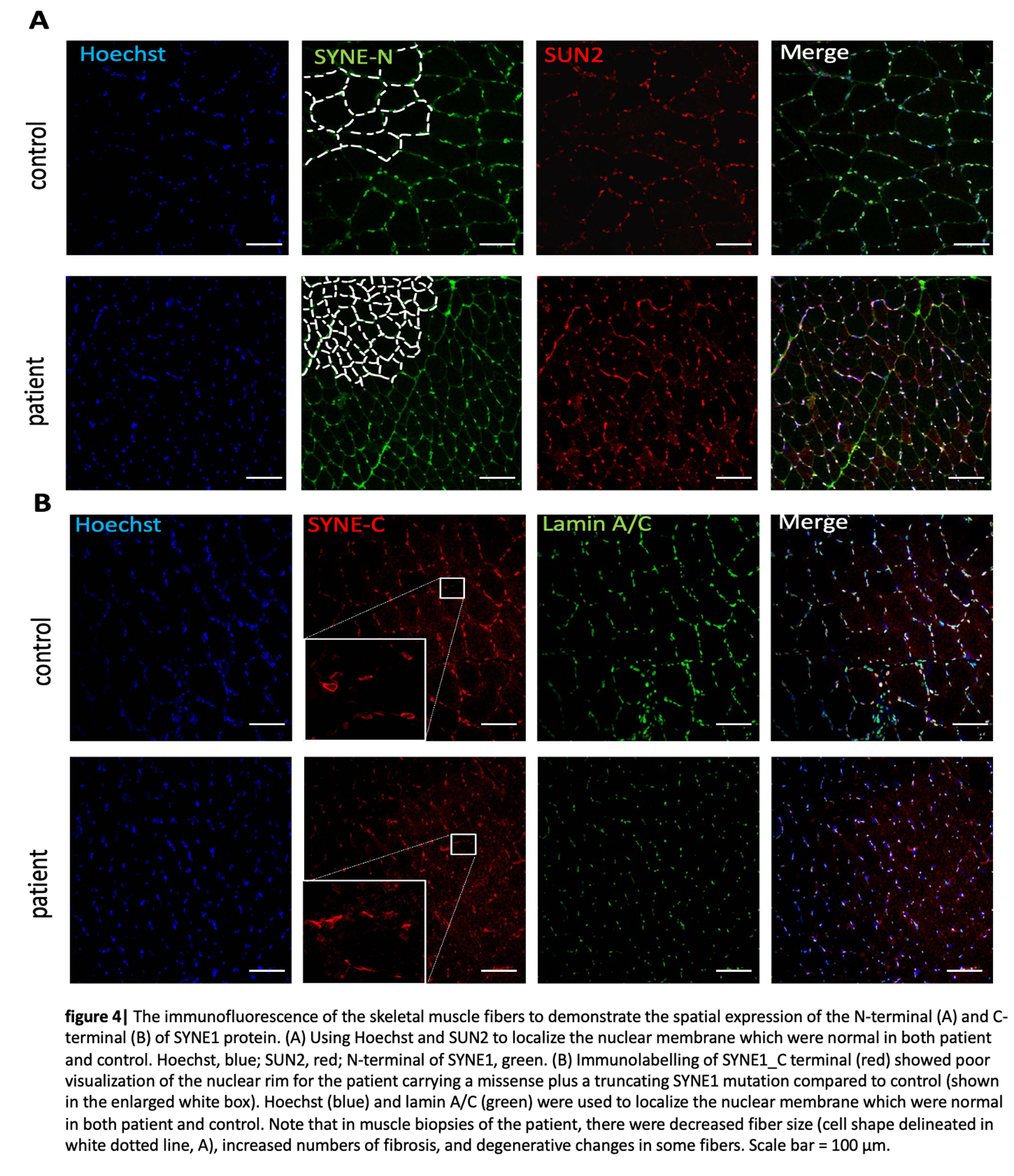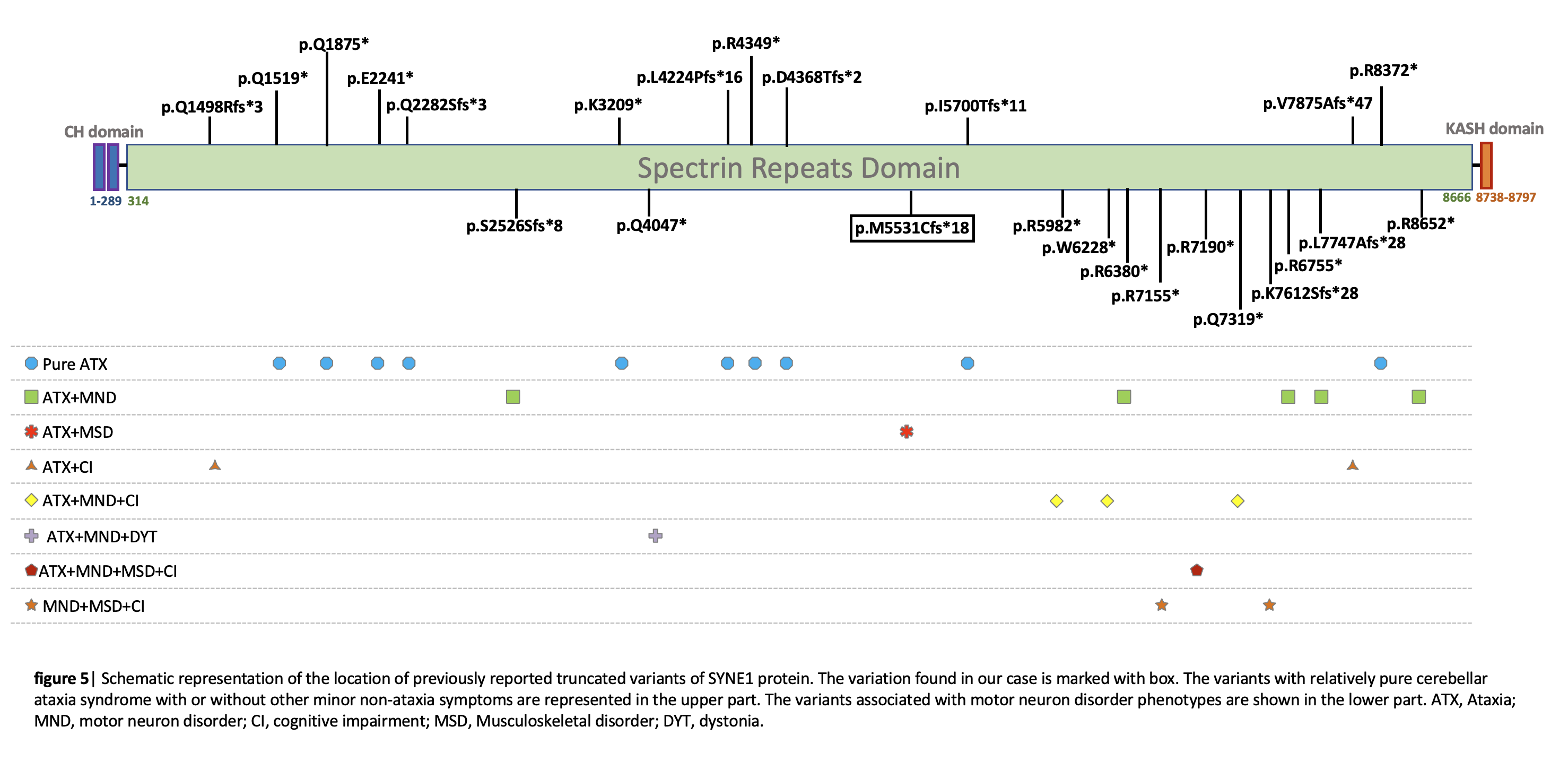Category: Ataxia
Objective: Mutations in the synaptic nuclear envelope protein 1 (SYNE1) gene have been reported to cause ARCA type 1 with a remarkable heterogeneity in clinical features and disease severity, ranging from pure cerebellar ataxia to a complex multisystem disorder [1,2].
Background: Mrs. Lin, a 43 year-old housewife, was born in a Chinese family with consanguineous marriage [figure1]. She presented with progressive unsteadiness since 2005 (27 years old), accompanied with vertigo, frequent choking episodes, dysarthria and scanning speech. In addition, bilateral weakness and thinning of lower limbs with high arch foot gradually developed [figure2]. The neurological examination showed gaze-evoked nystagmus, saccadic intrusions during smooth pursuits, truncal titubation, bilateral limbs dysmetria and wide-based ataxic gait. Additional neurological features were general mild hypotonus, reduced 4 limbs vibration sense, mild kyphoscoliosis, high arch feet and thinning of ankles. Her SARA (Scale for the Assessment and Rating of Ataxia) score was 25, and her Montreal Cognitive Assessment (MoCA) was 25. The laboratory tests were unremarkable. The brain magnetic resonance imaging (MRI) showed marked atrophy in the cerebellar hemispheres, vermis, and thinning of cerebellar peduncles.
Method: Further electrophysiological, muscle histological, and genetic studies were performed to investigate the pathophysiology and genotype of the patient.
Results: The needle electromyography (EMG) showed myopathic changes, and the muscle histology also showed minimal pathological changes [figure2]. The immunofluorescence of both primary fibroblasts and skeletal muscles showed poor visualization of the nuclear rim by immunolabelling of the SYNE1_C terminal compared to control, and there were decreased fiber size, increased fibrotic and degenerative changes in some muscle fibers [figure3,4]. The whole-exome sequencing yielded a novel homozygous frameshift deletion (NM_033071.4:c.16591del; p.Met5531Cysfs*18) of SYNE1, and the results were also confirmed by Sanger sequencing but not in other unaffected family members yet.
Conclusion: This novel SYNE1 frameshift mutation showed relatively pure cerebellar ataxia accompanied with myopathic changes of lower limbs with mild musculoskeletal abnormalities, which may add to the information database of genotype–phenotype correlation for future reference [3][figure5].
References: [1] Braga Neto P, Pedroso JL, Kuo SH, Marcondes Junior CF, Teive HA, Barsottini OG. Current concepts in the treatment of hereditary ataxias. Arq Neuropsiquiatr. 2016 Mar;74(3):244-52. doi: 10.1590/0004-282X20160038.
[2] Synofzik M, Smets K, Mallaret M, Di Bella D, Gallenmüller C, Baets J, Schulze M, Magri S, Sarto E, Mustafa M, Deconinck T, Haack T, Züchner S, Gonzalez M, Timmann D, Stendel C, Klopstock T, Durr A, Tranchant C, Sturm M, Hamza W, Nanetti L, Mariotti C, Koenig M, Schöls L, Schüle R, de Jonghe P, Anheim M, Taroni F, Bauer P. SYNE1 ataxia is a common recessive ataxia with major non-cerebellar features: a large multi-centre study. Brain. 2016 May;139(Pt 5):1378-93. doi: 10.1093/brain/aww079.
[3] Qian N, Wei T, Yang W, Wang J, Zhang S, Jin S, Dong W, Hao W, Yang Y and Huang R (2022) Case Report: Late-Onset Autosomal Recessive Cerebellar Ataxia Associated With SYNE1 Mutation in a Chinese Family. Front. Genet. 13:795188. doi: 10.3389/fgene.2022.795188
To cite this abstract in AMA style:
TL. Lee, CY. Chien, YT. Sun. Extended phenotypes of autosomal recessive cerebellar ataxia type 1: learn from a novel mutation of SYNE1 gene [abstract]. Mov Disord. 2023; 38 (suppl 1). https://www.mdsabstracts.org/abstract/extended-phenotypes-of-autosomal-recessive-cerebellar-ataxia-type-1-learn-from-a-novel-mutation-of-syne1-gene/. Accessed April 1, 2025.« Back to 2023 International Congress
MDS Abstracts - https://www.mdsabstracts.org/abstract/extended-phenotypes-of-autosomal-recessive-cerebellar-ataxia-type-1-learn-from-a-novel-mutation-of-syne1-gene/

